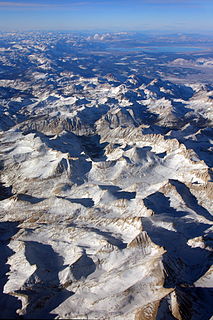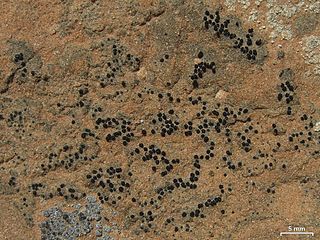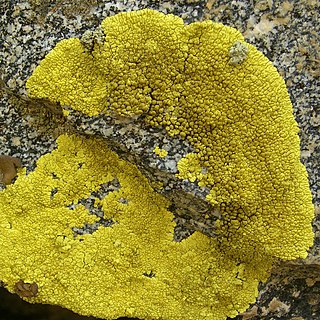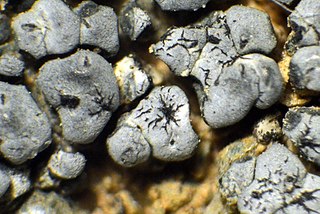
The Sierra Nevada is a mountain range in the Western United States, between the Central Valley of California and the Great Basin. The vast majority of the range lies in the state of California, although the Carson Range spur lies primarily in Nevada. The Sierra Nevada is part of the American Cordillera, an almost continuous chain of mountain ranges that forms the western "backbone" of the Americas.

The Great Basin is the largest area of contiguous endorheic watersheds, those with no outlets, in North America. It spans nearly all of Nevada, much of Utah, and portions of California, Idaho, Oregon, Wyoming, and Baja California. It is noted for both its arid climate and the basin and range topography that varies from the North American low point at Badwater Basin in Death Valley to the highest point of the contiguous United States, less than 100 miles (160 km) away at the summit of Mount Whitney. The region spans several physiographic divisions, biomes, ecoregions, and deserts.

The Pacific Coast Ranges are the series of mountain ranges that stretch along the West Coast of North America from Alaska south to Northern and Central Mexico. Although they are commonly thought to be the westernmost mountain range of the continental United States and Canada, the geologically distinct Insular Mountains of Vancouver Island lie further west.

The ecology of the Sierra Nevada, located in the U.S. states of California and Nevada, is diverse and complex: the plants and animals are a significant part of the scenic beauty of the mountain range. The combination of climate, topography, moisture, and soils influences the distribution of ecological communities across an elevation gradient from 500 to 14,500 feet. Biotic zones range from scrub and chaparral communities at lower elevations, to subalpine forests and alpine meadows at the higher elevations. Particular ecoregions that follow elevation contours are often described as a series of belts that follow the length of the Sierra Nevada. There are many hiking trails, paved and unpaved roads, and vast public lands in the Sierra Nevada for exploring the many different biomes and ecosystems.

Eriophyllum lanatum, with the common names common woolly sunflower, Oregon sunshine and golden yarrow, is a common, widespread, North American plant in the family Asteraceae.

Prunus subcordata, known by the common names Klamath plum, Oregon plum, Pacific plum and Sierra plum, is a member of the genus Prunus, native to the western United States, especially California and Oregon.

Staurothele is a genus of saxicolous (rock-dwelling), crustose lichens in the family Verrucariaceae. It has about 40 species. When the fungus is part of a lichen, the genus of lichen is commonly called rock pimples.

The Sierra Nevada red fox, also known as the High Sierra fox, is a subspecies of red fox found in the Oregon Cascades and the Sierra Nevada. It is likely one of the most endangered mammals in North America. The High Sierra fox shares most of its physical characteristics with the red fox, though it is slightly smaller and has some special adaptions for travel over snow. The High Sierra fox was discovered as a subspecies in 1937, but its study lapsed for more than half a century before its populations were rediscovered beginning in 1993. This subspecies of red fox may live up to 6 years.

Montane ecosystems are found on the slopes of mountains. The alpine climate in these regions strongly affects the ecosystem because temperatures fall as elevation increases, causing the ecosystem to stratify. This stratification is a crucial factor in shaping plant community, biodiversity, metabolic processes and ecosystem dynamics for montane ecosystems. Dense montane forests are common at moderate elevations, due to moderate temperatures and high rainfall. At higher elevations, the climate is harsher, with lower temperatures and higher winds, preventing the growth of trees and causing the plant community to transition to montane grasslands, shrublands or alpine tundra. Due to the unique climate conditions of montane ecosystems, they contain increased numbers of endemic species. Montane ecosystems also exhibit variation in ecosystem services, which include carbon storage and water supply.
Lichens of the Sierra Nevada have been little studied. A lichen is a composite organism consisting of a fungus and a photosynthetic partner growing together in a symbiotic relationship.

Lecidea atrobrunnea is a crustose lichen in the Lecideaceae family, found in mountains of the continental western United States and Alaska. With other lichen communities, it forms dark vertical drip-like stripings along drainage tracks in the rock faces, resulting in Native Americans giving the name "Face of a Young Woman Stained with Tears" to Half Dome. This combined lichen community appears black from a distance, but brown up close.

Dimelaena thysanota is a crustose lichen in the family Physciaceae, found in the mountains of western North America and the Sonoran Desert.
Koerberia sonomensis is a dark olive-green foliose lichen found in western North America mountains, Mediterranean areas of Europe, northern Africa and in the Sonoran Desert. The body (thallus) is a small .5 to 1 centimetre rosette of leafy structures with elongate lobes to 2 millimetres (0.079 in). The upper surface is dark olive-green sometimes striped, and the lower surface is pale olive-green. The fruiting forms (apothecia) are flat to slightly convex, and deep red-brown. It is in the Koerberia genus in the Placynthiaceae family.

Acarospora socialis is a usually bright yellow aereolate to squamulose crustose lichen in the Acarosporaceae family that grows up to 10 cm wide, mostly on rock in western North America. It is among the most common lichens in the deserts of Arizona and southern California. It grows on sandstone, intrusive and extrusive igneous rock such as granitics, in all kinds of exposures to sunlight, including vertical rock walls. It is found in North America, including areas of the Mojave Desert and Sonoran Desert region, to Baja California Sur. It is the most common yellow member of its genus in southwestern North America. It sometimes, but rarely, grows on other soil crusts. It is a pioneer species.

Pleopsidium flavum is a distinctively colored, bright lemon-yellow to chartreuse crustose lichen that grows in high elevations on vertical or overhanging hard felsic rock in western North America. Its thallus grows in a circular outwardly radiating pattern, with 1mm wide lobed edges. This is the identity of the vivid, lime-green lichens often photographed on granite boulders in the Wichita Mountains Wildlife Refuge of Oklahoma.
Lepraria pacifica, the Pacific dust lichen, is a whitish-blue-green leprose crustose lichen that grows on its substrate like patches of granular, caked-up, mealy dust grains. Like other members of the Lepraria genus, it only reproduces asexually.
Acarospora americana is a dark brown to black verriculous to areloate or squamulose crustose lichen with deeply immersed reddish to blackish-brown apothecia found in the Sierra Nevada and other southern California mountain ranges. Lichen spot tests are all negative.

Aspicilia cyanescens is a rough surfaced, bluish-tinged pale gray rimose to areolate crustose lichen, endemic to California. It mostly grows on rock. It is unique among California members of its genus in that it can sometimes be found on growing on bark or wood, especially incense cedar and sometimes on white fir or giant sequoias in the central Sierra Nevada range and southern California mountains. It has a black or bluish or greenish prothallus. The prothallus is usually absent when growing on rock. Each areole commonly has 1-7 roundish to angular apothecia that are .1 - 1.3 mm in diameter. Apothecia have black to blue-black, concave to flat discs, without pruina. Lichen spot tests are all negative.
Heteroplacidium zamenhofianum is a species of lichenicolous (lichen-eating) lichen in the family Verrucariaceae. As a juvenile, it is parasitic on some members of the lichen genus Staurothele, but later becomes independent and develops a brown, crustose thallus. Characteristic features of the lichen include its dark brown, somewhat squamulous thallus and relatively small ascospores. It is widely distributed in Europe and North America.
Verrucaria oulankaensis is a rare species of saxicolous (rock-dwelling) crustose lichen in the family Verrucariaceae. It is found in north-eastern Finland, where it occurs on calcareous rocks on river shores.














